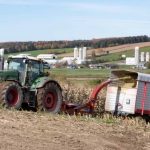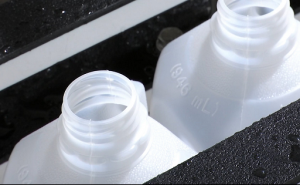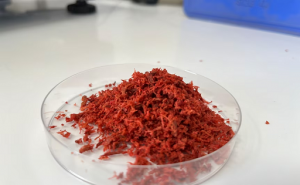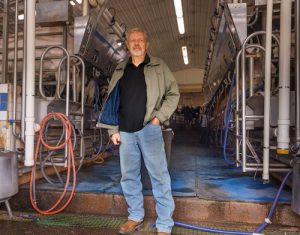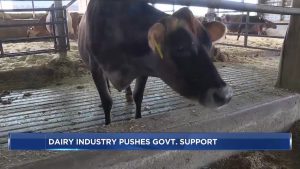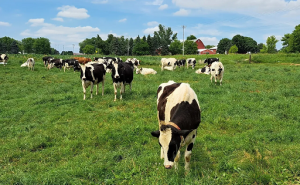
Robots, sensors, connected devices, virtual reality and even artificial intelligence (AI) have become a daily presence in our hospitals, care facilities and even in our homes.
Robots
Every day, up to 3,000 blood samples are transported by robots in Denmark’s Aalborg University Hospital from bedside to the lab, with the same robots being witnessed in the corridors of America’s biggest hospitals. Robots enable consistent, accurate sample analysis through maintaining stable temperatures during transport without deviating from their path or getting distracted from their task.
Agricultural robots are being embraced in a similar manner on the farm. Shouldering the burden of harvesting, planting, irrigation and other manual tasks in the field. The advent of robots to milk cows (or most precisely allowing cows to decide when they want to be milked), cleaning barns and feeding, which AgriTech Capital estimates at over 1 million cows globally.
Internet of Things (IoTs)
IoT technology, smart devices like Fitbits and Apple Watches, are changing the game in our hospitals. Wearable health devices provide real time relevant data for doctors and consultants, freeing bedside staff from constant monitoring.
Likewise, precision agriculture is using sensors to monitor crop conditions for moisture (irrigation efficiency), diseases, readiness for harvest, and other factors. Before, this was a time-consuming and labor-intensive task with frequent observational errors. Now, IoTs can accurately analyze dairy farm inputs and management in real-time, increasing precision and giving farmers back time. Visible examples of this in our dairies include the use of millions of wearable collars and eartags, and more recently the smart rumen bolus of SmaXtec is the latest technology in the US dairy market, already being used in hundreds of thousands of cows. Knowing cow movements, cows productivity and health before problems become visible is worth hundreds of dollars per animal per year to a dairy farmer,
Artificial Intelligence (AI)
Clinicians’ mistakes result in cost the healthcare industry over $2 billion annually and the lives of over 200,000 people. Artificial intelligence (AI) can play a critical role in eliminating this. Errors caused by fatigue, memory, lack of experience or training, and misapprehensions are significantly reduced when AI supports decision-making.
What mistakes could we eliminate on our farms? When so much knowledge relies on being passed from generation to generation AI can eliminate human errors, accurately analyzing data, predicting yields, identifying potential health challenges, optimizing resource allocation and linking decisions to market demands and prices. In fact, AI computations can play a crucial role in addressing carbon credits and resource scarcity. Big data and cloud computing are also allowing farmers to address the real complexity they face of weather, genetics, market turbulence and the microbiome of soil and the animals they feed. Ever.Ag is an example of a technology company specifically focused on dairy, which enabling better decisions to be taken in real time based on market movements, with fewer mistakes.

(Canva)
Lessons for Ag
The World Bank has raised concerns about technology replacing workers but as we’ve seen in hospitals, we don’t have fewer doctors, nurses or caregivers. Human labor is not being eliminated but the jobs humans fill have shifted, and the same is expected to happen in agriculture.
Future dairy workers should be recruited with new skills; data analysis, software engineering, coding. A McKinsey survey revealed that more than 50% of large farms and nearly a quarter of small farms are using (or planning to use) precision agriculture technology, so the demand for high-skill jobs will only grow.
What is the best way to prepare agriculture for these changes? Retain and invest in talent. Agricultural employment in the U.S. is only expected to increase by 1%. Agriculture has always had a “people problem.” But as Agri executive search group Kincannon & Reed says “if it was difficult to find good help before, then it’s even more difficult now.”
Automation could also help. Traditionally workers have left farming because of poor pay and difficult conditions. If automation replaces the jobs laborers don’t want to do, the opportunity will be for stimulating, higher-paying work that attracts and retains an adaptable workforce.
Talent retention goes hand in hand with talent investment. As I noted in the The Future of Agriculture, education and training programs cultivate a diverse and flexible workforce that evolves with each innovation.
Technology on the farm offers solutions to many of agriculture’s most pressing problems, but if dairy farmers can learn from healthcare and invest in the workforce now, these technologies will boost productivity and profits. Is Healthcare’s transformation a road map for farming? Using robotics, sensors and AI to grow food efficiently, precisely, cost-effectively, offers safe and affordable food, but also answers the sustainability demands of the consumer, climate change, resource scarcity.
